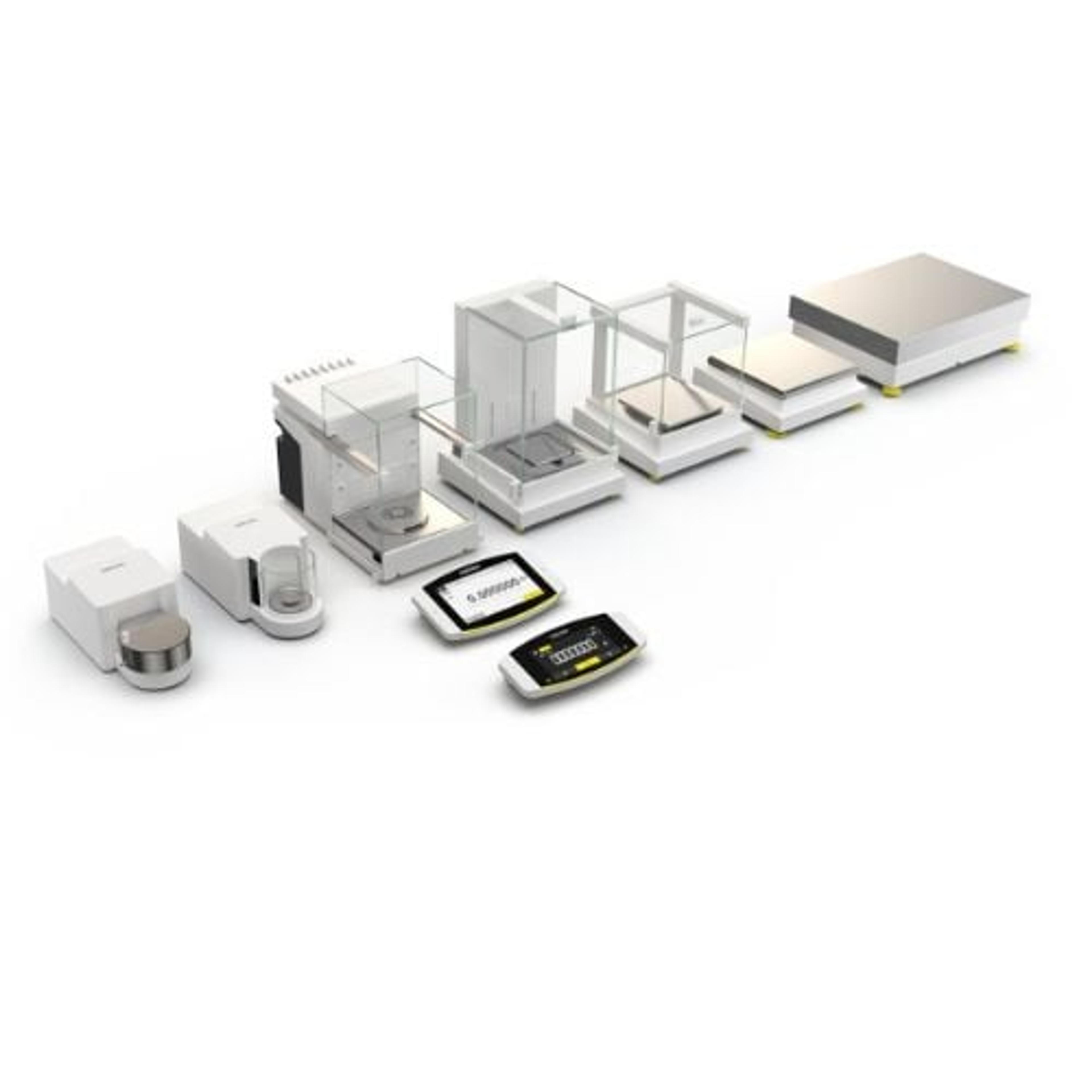A matter of great weight: Ensuring compliance with the revised European Pharmacopoeia
Explore the importance of the European Pharmacopoeia to pharma manufacturers worldwide, with exclusive insights into the recently released version
28 Sept 2021

The European Pharmacopoeia is an important guide to the quality standards that drug manufacturers supplying the EU market must adhere to. The latest publication of the guidance document, released in July 2021, includes a new chapter on specifications for analytical balances. Here, SelectScience® looks at the background and key issues, speaking with leading experts from Sartorius about the implications of this update for manufacturers and how an optimized lab balance design can help with pharmacopoeia compliance.
The global importance of pharmacopoeias
Pharmacopoeias are drug specification documents that are designed to harmonize and regulate formulations for medicines of all kinds. They outline specifications for medicine production and the processes involved. Some of the oldest known pharmacopoeias date back to before the 10th century, with modern national and regional pharmacopeias being published as joint efforts since the early 19th century.
Today, pharmacopoeia specifications are regulated such that regardless of the origin country of drug production, if a drug is sold in the United States market, the manufacturer needs to adhere to the United States Pharmacopoeia (USP) stipulations. For example, this applies to multinational pharmaceutical companies undertaking drug production in countries such as India, where the US Food and Drug Administration (FDA) would still be the end decision maker on Indian-manufactured drugs entering the US market, based on compliance to the USP. Similar rules apply for European, Chinese, Japanese, or other pharmacopoeias within their jurisdictions.
If a pharma manufacturer supplies to multiple markets across the globe, its drug, and associated production process need to adhere to the respective guidelines set in all the applicable individual markets. “Differences between major market pharmacopoeias globally, such as the USP and the European Pharmacopoeia (Ph.Eur.), are small, but they do exist, making it essential for manufacturers to closely follow the details,” notes Dr. Julian Haller, metrology expert at Sartorius.
Regulations governing the use of laboratory balances
Each drug covered in the pharmacopeias has dedicated descriptions of the different preparations and analytical tests involved, written in sections called monographs. Most monographs also detail the involved weighing procedures for the reagents and products used. “For over a decade or so, the USP was the only national pharmacopoeia globally that had a dedicated chapter (Chapter 41) on analytical balances. This chapter detailed general considerations, from installation and testing of the weighing equipment to specifications on the procedure of weighing chemicals,” says Haller.
Recently, in July 2021, the publisher of the Ph.Eur., the European Directorate for the Quality of Medicines (EDQM), also published a chapter – Chapter 2.1.7 – on analytical balances within its guidelines. As compliance with this chapter becomes mandatory from January 2022, drug manufacturers supplying the European market must ensure that their balances and weighing processes adhere to the chapter’s specifications. “The newly published Chapter 2.1.7 enumerates various considerations for analytical balances, including the use of appropriate balance types and SI units, as well as equipment installation, location, and performance,” explains Dr. Holger Densow, product manager for lab weighing at Sartorius.
A delicate balance: Dealing with differences between guidelines
Drug manufacturers that supply both the US and the EU but have been following only the USP balance requirements, now need to adapt to accommodate Ph.Eur. requirements as well. Weighing in on differences between the US and European pharmacopoeia considerations on balances, Densow elaborates: “While the minimum sample weight limits in the USP and the Ph.Eur. are identical, requirements on the repeatability and accuracy tests to determine the minimum sample weights differ.”
Such differences highlight crucial considerations that laboratory balance manufacturers need to incorporate into their products to ensure that users are equipped to follow procedures adherent to both the USP and Ph.Eur. documents. Below, Haller and Densow share more on how Sartorius, a leading balance manufacturer, is ensuring its customers can comply with the latest Ph.Eur. changes with the help of its product Cubis II balance.
Chapter 2.1.7 and the Cubis II: Expert Q&A
What does the Ph.Eur. state about the use of laboratory balances?
HD: Chapter 2.1.7 covers general considerations and recommended measures to optimize balance performance such as avoiding air currents, electrostatic forces, eccentric load, magnetic forces, vibrations, etc. It also recommends that factors like temperature, humidity, and barometric pressure be monitored and considered in the outputs.
How did Sartorius contribute to the Ph. Eur. chapter on analytical balances?
JH: The EDQM has expert groups for the different Ph.Eur. chapters and monographs. It also invites renowned manufacturers to contribute as ad-hoc experts, as and when required. Roughly three years ago, the EDQM contacted Sartorius, requesting that we contribute to a calibration guideline for balances, as an ad-hoc expert. The written draft went through multiple online review rounds and was then vetted by different stakeholders including pharmaceutical companies and the EDQM committee. Finally, the chapter was published in version 10.6 of the European Pharmacopoeia, which as per standard practice will become mandatory after a six-month transition period next year.
How is the Cubis II designed to comply with the latest changes in the Ph.Eur.?
HD: We have incorporated technical features into the Cubis II to adhere to the new requirements.
The Cubis II equipment has draft shields and specific weighing pans to prevent airflow. It offers ionizers (internal or external) for electrostatic considerations and has in-built nonmagnetic weighing pans using titanium-based sample holders. We also offer an internal or external climate module and air buoyancy correction as a solution to meet the desired temperature, humidity, and pressure considerations for balances. Additionally, we provide weighing tables to stabilize the system and reduce vibrations.
Coupled with the Cubis II equipment, we have different software packages that enable various applications. As balances must be calibrated at regular intervals, we have included user calibration software in this package. Our existing application called USP Advanced QApp, which offers a guided workflow for testing and determines the minimum sample weight, has now been modified to include Ph.Eur. recommendations as well. We provide an application called minUSP that monitors the weight determined by the USP Advanced QApp and checks it against permitted ranges as per the different guidelines. These applications can be paired with add-on advanced software programs for determining and monitoring the measurement uncertainty.
JH: We have made sure to incorporate different features to the Cubis II, alongside technical solutions that will help our customers successfully meet the requirements of the Ph.Eur Chapter 2.1.7. With such programs that provide performance checks along with internal and external calibration checks, we help ensure that the weighing outputs comply with the considerations set by the USP or Ph.Eur. pharmacopeias.
What are the additional benefits of the Cubis II to those in the pharmaceutical industry?
HD: We have a software package specifically designed for the pharma industry called Pharma Package QP1. This package is compliant with the USP and other guidelines relevant to the industry such as 21 CFR Part 11 (which is an FDA guideline regulating electronic records, user management, and electronic signatures). The applications in this package will soon be modified and relaunched in the coming months to also incorporate the Ph.Eur. specifications. We also offer service solutions at Sartorius. We can measure the Cubis II balance on site and issue USP and European Pharmacopoeia calibration certificates as well.
Do you use Sartorius products in your lab? Write a review today for your chance to win a $400 Amazon gift card>>

